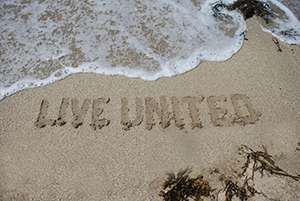A Critical Time for Kids
Birth through third grade is a critical time for children to meet important language and literacy milestones that will lay the foundation for future academic and life success. Most parents have a few spring break activities planned and with just a little creative thinking can turn vacation fun into opportunities to expand young minds and encourage literacy.
In addition to reading, writing and critical thinking, early literacy involves skills such as vocabulary, phonemic awareness*, print awareness** and learning to listen. Parents can help kids develop these important skills while enjoying typical Spring Break activities like the ones below:
LAKE
- Sand Writing: Fun for all ages, practice writing letters, numbers and words in the sand or pebbles on the shores of nearby lakes. Younger children can practice their name, while older ones try to spell unfamiliar words or write a short story.
- Lake Vocabulary: What is a buoy, dock, marina, ramada or catfish? Stretch kid’s vocabulary by relating new lake words with ones they already know.
- Listening to the Lake: Sit on the edge of the water next to your child, close your eyes and have them listen and identify new sounds like the waves, boats, and birds and familiar sounds like cars honking, laughter or their family’s voices.
LIBRARY
- A Book Trip: Check out a book about a place your child (or you) would like to visit. Learn new words, read about unusual activities, discuss the best thing to wear based on hot or cold climate and what unique food to eat.
- The Next Chapter: Read a library book and afterwards ask your child, “What do you think happens next?” Younger children can verbalize or draw illustrations, while older kids can write out the book’s extra chapter.
- Ask a Librarian: Teach children to ask for book recommendations on topics that interest them. The Librarian can also introduce engaging new series or authors to broaden interests beyond superheroes and princesses.
SPRING TRAINING
- Keeping Score: Even young kid’s can develop listening skills, work on critical thinking, and practice adding numbers if you help them keep score for an inning or two.
- Find you Favorite Player: Kindergartners can try to identify letters they know on the back of player’s jerseys, while older children work on Phonemic awareness trying to sound out unfamiliar player’s names.
- Fan Quiz: Encourage critical thinking by asking kids to find people in the stand rooting for each team. Encourage them to look at what they are wearing and if their faces look happy or sad when a team scores.
ZOO
- The Sign Says: Whether kids can read or not, develop the habit of looking at clues like the exhibit sign to guess the name of the animal, what it likes to eat, if it is nocturnal, and answers to other behavior questions.
- O-rang-i-tang or Orangutan: Have kids try to sound out names on their own and then model proper enunciation if needed. As kids learn new words don’t go over board. It is more important to introduce new concepts, sounds and words than it is for kids to have perfect pronunciation their first try.
- Animal Noises: First listen to animal noises and then try to mimic any sounds they make. Are any of the sounds part of the animals’ name? e.g. “S” is for “snake”
No matter how you spend your springs break, think about ways to encourage literacy in your young kids. Everything you do from the time they are born can help children form the basis for language and literacy success.
Do you have additional ideas for one of these locations? What are you doing for spring break?
* Phonemic awareness (share how words are made of different sounds)
** Print awareness (show how printed letters are symbols for sounds and words)

